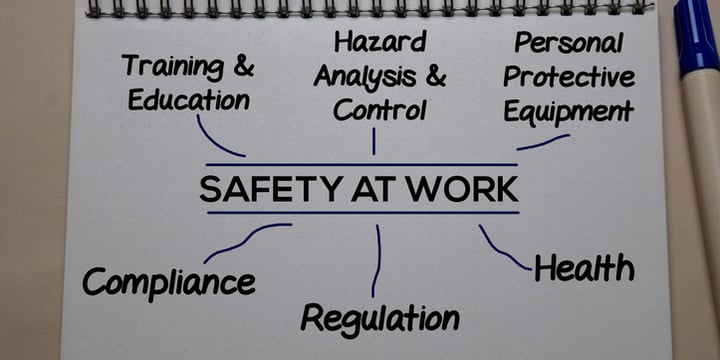 Finding and retaining good employees is often cited as one of the biggest challenges employers face, and the current labor shortage isn't making it any easier. Hiring new employees can be time-consuming, frustrating, and costly. According to Gallup, "The cost of replacing an individual employee can range from one-half to two times the employee's annual salary -- and that's a conservative estimate."
Finding and retaining good employees is often cited as one of the biggest challenges employers face, and the current labor shortage isn't making it any easier. Hiring new employees can be time-consuming, frustrating, and costly. According to Gallup, "The cost of replacing an individual employee can range from one-half to two times the employee's annual salary -- and that's a conservative estimate."
Businesses can help minimize those costs by remembering that keeping their employees safe on the job is financially in their best interest – not to mention one of their primary responsibilities as an employer. OSHA states, "Under the Occupational Safety and Health Act of 1970, employers are responsible for providing a safe and healthful workplace. No person should ever have to be injured, become ill, or die for a paycheck."
Providing a safe and healthy workplace benefits employers with lower Workers' Compensation Insurance costs, reduced absenteeism, increased productivity, and better employee morale. The bottom line: workplace safety is good for business, especially in those industries that are particularly dangerous, such as construction, restaurant, and trucking.
The first step to creating a safer work environment is a comprehensive workplace safety program. OSHA reports that businesses receive an average return of $4 to $6 for every dollar invested in workplace safety programs.
One of the essential elements of a workplace safety program is Training. OSHA states, "Training in the safe way for workers to do their jobs well is an investment that will pay back over and over again in fewer injuries and illnesses, better morale, lower insurance premiums and more."
Here are four safety training guidelines:
1. Identify Hazards
One of the first steps in any workplace safety program is to identify potential hazards and initiate controls. Hazard controls can help minimize employee exposure to workplace hazards before work begins. The National Institute for Occupational Safety and Health (NIOSH) suggests implementing a hierarchy of controls that includes the following:
- Elimination – physically removing the hazard
- Substitution – replacing the hazard
- Engineering Controls – isolating people from the hazard
- Administrative Controls – changing the way people work
- PPE – protecting employees with personal protective equipment
Once you understand potential hazards in your workplace and initiated appropriate controls, your next step is to train employees on those hazards and how to avoid them.
2. Understand Safety Standards/Regulations
OSHA's Occupational Safety and Health Act of 1970 includes many regulations/standards that employers are required to follow, including training requirements. OSHA states, "Many OSHA standards, which have prevented countless workplace tragedies, include explicit safety and health training requirements to ensure that workers have the required skills and knowledge to do their work safely. These requirements reflect OSHA's belief that training is an essential part of every employer's safety and health program for protecting workers from injuries and illnesses. Researchers conclude that those who are new on the job have a higher rate of injuries and illnesses than more experienced workers."
Following these regulations help keep your employees safe and protects your business from OSHA penalties, which can be as high as $136,532 per violation.
3. Provide Effective Training
Not everyone is a good trainer, so choose your trainers wisely. A good trainer is organized, understands the importance of listening, knows how to engage employees, etc. If you want the safety training to be effective, choose someone adept at teaching people, not someone who will simply read from a book.
You may want to consider using some of the training resources offered by OSHA, such as training material and training courses.
4. Document Training
OSHA standards require training documentation for certain types of safety training but not all. However, it's in your best interest to document all safety training. Documentation should include the name of the employee attending (and possibly their signature), the name and signature of the person training, the date and subject of the Training, and proof of competency.
Lower Workers' Compensation Insurance Costs the Easy Way!
Give American Insuring Group a call today at (800) 947-1270 or (610) 775-3848, or connect with us online to discover more ways to save on all of your insurance needs. We're independent agents, so we shop among competing insurance carriers to get you the best deal on the right insurance. Contact us today!







